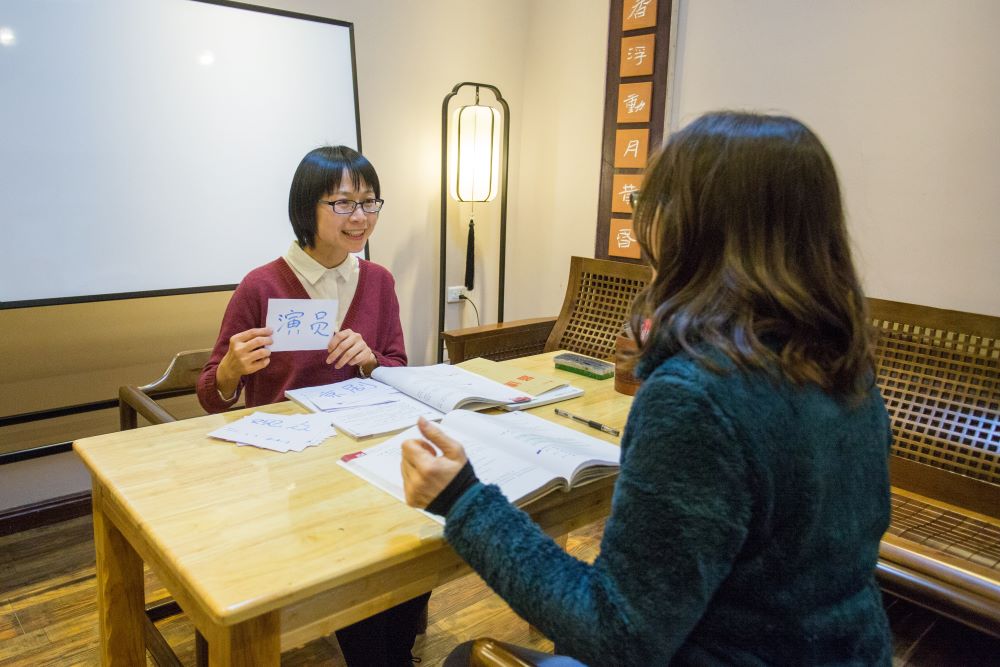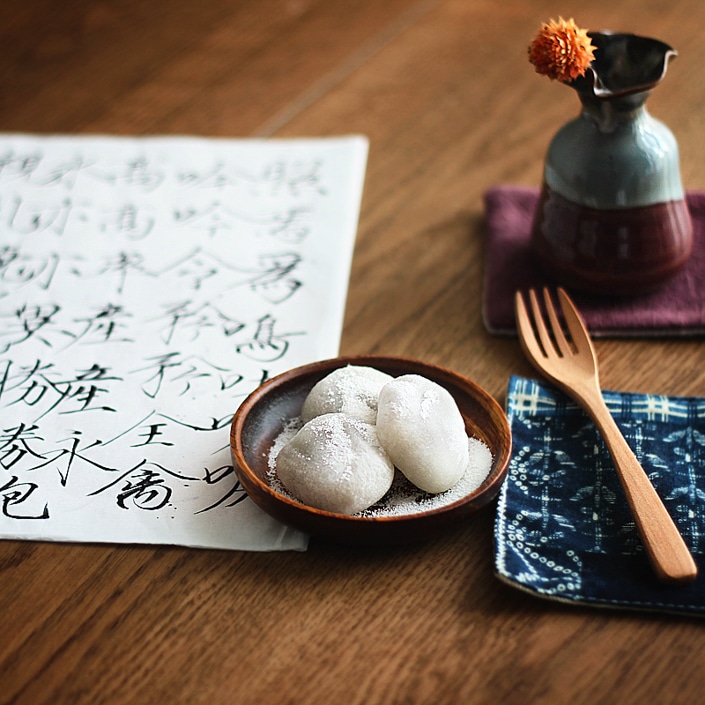What’s the Difference Between Mandarin and Cantonese?
Learn Chinese in China or on Zoom and gain fluency in Chinese!
Join CLI and learn Chinese with your personal team of Mandarin teachers online or in person at the CLI Center in Guilin, China.
Curious about the difference between Mandarin and Cantonese? Trying to decide which one to learn? Read on to answer these questions and more!

Mandarin vs Cantonese: What's the Difference?
At first glance, Cantonese (粤语 Yuèyǔ or 广东话 Guǎngdōnghuà) and Mandarin (普通话 Pǔtōnghuà) may seem nearly identical. After all, they are both Chinese languages. Yet fundamentally, they are two very distinct dialects and have many important differences.
Mandarin and Cantonese each have a unique number of tones, utilize a different romanization system, and vary greatly in terms of total number of speakers. We explain each of these differences in greater depth below.
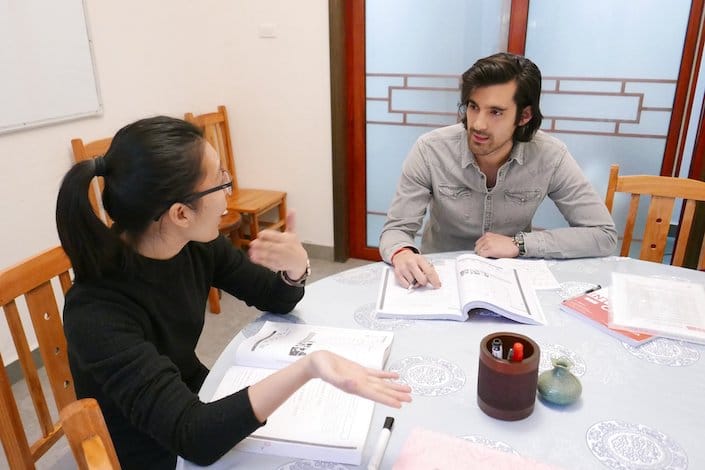
Mandarin and Cantonese are mutually unintelligible.
Number of tones
Mandarin Chinese consists of four main tones as well as a fifth "neutral" tone. These tones consist of a high (flat), rising, low (dipping), falling, and neutral tone.
In pinyin, each tone is represented by an accent mark over a vowel. For example, we write the tones that modify the Mandarin vowel “a” as follows:
- First tone: ā
- Second tone: á
- Third tone: ǎ
- Fourth tone: à
- Fifth tone (“neutral” tone): a
Mandarin tones may seem tough to comprehend, but they are even trickier in Cantonese. That’s because Cantonese features 6 primary tones. Yes, 6!
According to some romanization systems, there are "9 tones" in the Cantonese language. However, it’s more common to say there are 6 because tones 7, 8 and 9 are just shorter versions of tones 1, 3 and 6 with the addition of three short ending consonants –p, –t, and –k.
Therefore, Cantonese is often called the language of “9 sounds and 6 tones” (九声六调 jiǔ shēng liù diào).
Romanization systems
Since Chinese characters are logograms, various romanization systems exist to write out the sounds using the Latin alphabet.
If you learned Mandarin abroad or in mainland China, you probably felt an enormous sense of gratitude for Mandarin’s pinyin transliteration system. After all, the majority of non-Chinese speakers find pinyin relatively easy to grasp.

Zhou Youguang created the pinyin romanization system in the 1950s.
In addition to pinyin, there are several other romanization systems in use today.
Bopomofo (also called Zhuyin 注音) is another romanization system for Mandarin that’s used in Taiwan. Bopomofo is a distinct alphabet that transcribes all possible sounds in Mandarin. Its symbols derive mainly from variations of ancient Chinese characters.
Here is an example of pinyin and bopomofo/zhuyin side-by-side:
- Characters: 好开心认识你 (nice to meet you)
- Pinyin: Hǎo kāixīn rènshi nǐ
- Zhuyin: ㄏㄠˇ ㄎㄞ ㄒ丨ㄣ ㄖㄣˋ ㄕ˙ ㄋ丨ˇ
However, the romanticization system for Cantonese is quite different from both pinyin and bopomofo. Three separate romanization systems are commonly used for Cantonese: Yale, Cantonese pinyin and Jyutping.
There are some differences between the initial consonants used in each system. In general, the Yale system uses tone marks whereas Jyutping uses tone numbers.
Although the Yale system underwent some much needed updates in 1994, Jyutping is still the more dominant method of transliteration, mainly due to its technological advantages when it comes to typing in Chinese.
Here's an example of the Jyutping, Yale and Cantonese pinyin romanization systems side-by-side:
- Characters: 好开心认识你 (nice to meet you)
- Jyutping: hou2 hoi1 sam1 jing6 sik1 nei5
- Yale: hóu hōi sām yihng sīk néih
- Cantonese pinyin: hou2 hoi1 sam1 jing6 sik7 nei5
Unfortunately, there’s no “official” Cantonese transliteration system due to a lack of government standardization. This can sometimes cause confusion for learners who may not know which system to learn first.
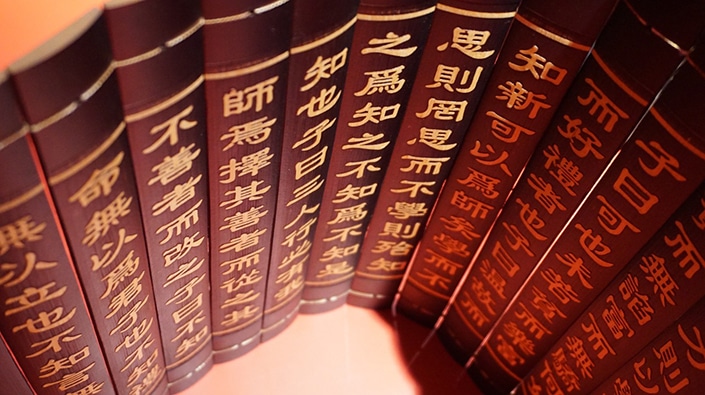
No official romanization system for Cantonese exists, which complicates matters for language students.
Written vs spoken language
One of the convenient things about Mandarin Chinese is that there are no differences between the written and spoken language – it is basically written how it is spoken.
However, colloquial spoken Cantonese differs quite a lot from formal written Cantonese, which can cause a lot of headache for learners! In order to fully understand this we need to take a quick look at the history of written Chinese (书面语 shūmiànyǔ).
Until the 20th century, Classical Chinese was used as the formal written language throughout China. It was gradually replaced by Standard Chinese—the written form of Mandarin based on the Beijing dialect—as the lingua franca among the speakers of other Mandarin dialects and Chinese varieties.
In Cantonese speaking regions such as Hong Kong, for example, children learn to read and write Standard Chinese but with the Cantonese pronunciation of each character.

Cantonese remains the dominant language in Hong Kong.
However, colloquial spoken (口语 kǒuyǔ) Cantonese often has a completely different vocabulary set, which has created a discrepancy between its written and spoken form.
Increasingly, written colloquial Cantonese—known as Written Cantonese and based on the spoken version of the language—is on the rise. This results in the creation of new characters for words that either do not exist or have been lost in Standard Chinese.
Technology and digital communication has greatly aided the growth of written colloquial Cantonese, and you will often find it widely used across the Internet especially on social media platforms.
Number of speakers of Mandarin and Cantonese
Another fundamental difference between Mandarin and Cantonese is the number of native speakers.
Approximately 920 million people speak Mandarin Chinese as a first language, and another 200 million as a second language. On the other hand, there are around 84 million native Cantonese speakers and approximately 400,000 who speak it as a second language.
Although most Cantonese speakers reside in and around Hong Kong, it’s important to note that mainland China also boasts a substantial population of Cantonese speakers, especially in Guangdong Province. For this reason, Cantonese is sometimes referred to as 广东话 (Guǎngdōnghuà) in mainland China.
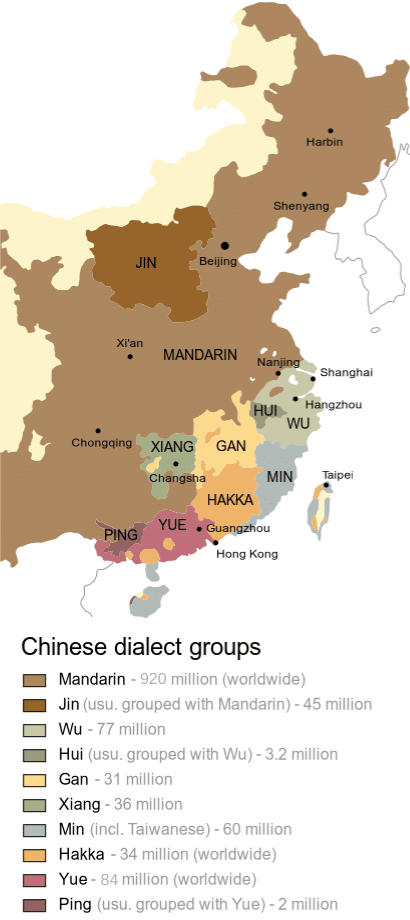
Southern China is home to around 84 million native speakers of Yue, or Cantonese.
Similarities between Mandarin and Cantonese
Now that we have explored the main differences between Mandarin and Cantonese, let's explore their similarities:
Traditional and simplified characters
As previously mentioned, both Mandarin and Cantonese use the same writing system, which consists of Chinese characters (汉字 hànzì).
Just like Mandarin, Cantonese is also written using both simplified and traditional characters depending on the region. In mainland China, locals and officials alike typically write Cantonese with simplified Chinese characters. In Hong Kong, the population almost exclusively uses traditional characters.
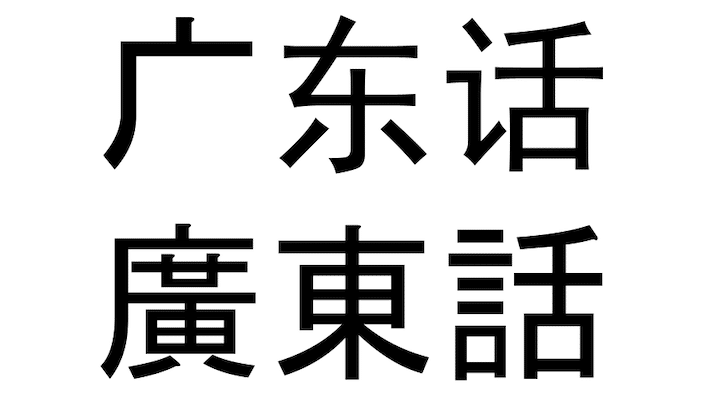
Cantonese typically utilizes traditional Chinese characters. Above, note the differences between the Chinese word for Cantonese (广东话 Guǎngdōnghuà) in simplified (top) and traditional (bottom) characters.
Mutual written intelligibility
Mandarin and Cantonese speakers can communicate in writing. This is because Mandarin and Cantonese share a written system even though their verbal pronunciations are very different.
This means that if you are exclusively proficient in Mandarin, you will have no problem reading a newspaper written by someone only fluent in Cantonese.
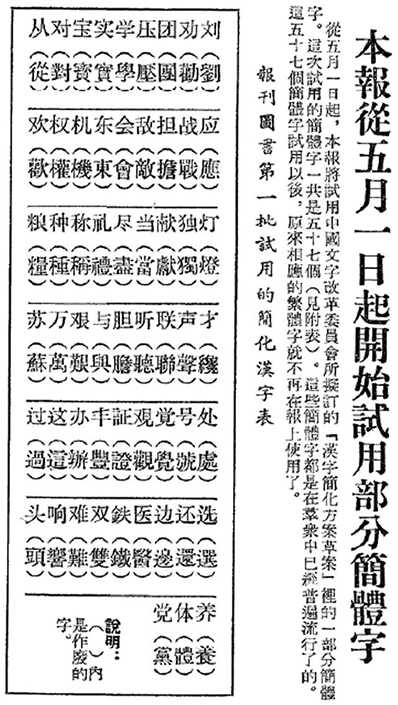
A page published in 1955 in the Beijing Daily announcing the newspaper will begin using simplified, rather than traditional, characters.
Is it better to learn Mandarin or Cantonese?
Many aspiring language learners often struggle with the question of whether to learn Mandarin or Cantonese. Ultimately, what language you decide to learn will always be a personal choice based on your own goals and current circumstances. However, here are a few things to consider before deciding which one is right for you:
Mandarin is easier
As you have seen, Mandarin not only has an official romanization system, but it also has fewer tones. Furthermore, there are far fewer differences between colloquial and formal Mandarin.

Mandarin is generally easier for students to learn than Cantonese.
Usefulness
Another thing to take into consideration is how useful each language is to you. If you intend on living in Hong Kong, Macau, or even rural Guangdong Province, or you wish to communicate with overseas Cantonese speakers, then Cantonese is the more sensible choice.
However, if we’re talking about “usefulness” in a broader, more international sense, then Mandarin Chinese objectively wins.
Cantonese is generally only appears in specific locations and among members of certain demographics, and therefore is somewhat of a niche language.
Mandarin, on the other hand, is the official language of mainland China, Taiwan and Singapore, and boasts over a billion speakers worldwide.

Speaking Mandarin allows you to communicate with people all over Asia and the world.
Furthermore, Mandarin is the lingua franca within China and to some extent in East Asia. This is especially true in the retail and tourism sectors and in situations where English is not a viable option. For example, in South Korea, you will come across many employees in customer service who speak a decent level of Mandarin Chinese but not English.
The Chinese government has gone to great lengths to promote the learning of Mandarin as a second language. These efforts are beginning to bear fruit, and Mandarin enjoys a growing influence in countries such as Korea, Japan, Vietnam and Thailand.
Mandarin is being taught in public schools worldwide and there are many opportunities for students to study abroad in China via Chinese government scholarships.
The dominance of Mandarin is even evident amongst Cantonese speakers, who (if not completely bilingual), generally speak at least some level of Mandarin.

Many Cantonese speakers also speak some Mandarin.
Robust accreditation and standardization
Unfortunately, Cantonese does not yet have an official standardized proficiency test or curriculum for non-native speakers.
Mandarin, on the other hand, has the HSK exam, which provides students with a solid road map to achieving an advanced level of proficiency. You can also use an HSK certificate to provide proof of your language proficiency. Furthermore, it can help you breeze through the bureaucratic process required to study or work in China.
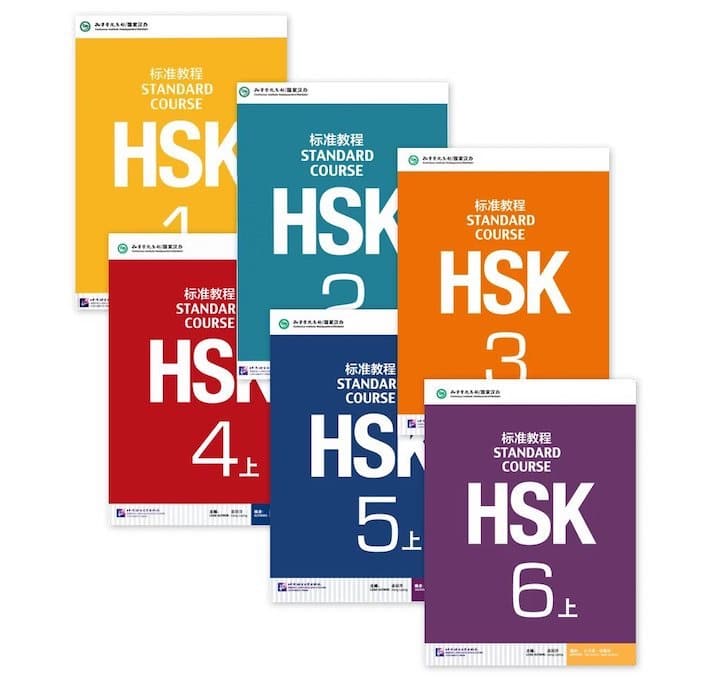
The existence of standardized tests of Mandarin Chinese like the HSK make it easier for Mandarin speakers to prove their proficiency.
If in doubt… just learn both!
Although Mandarin and Cantonese have many similarities, they are not mutually intelligible. That said, knowing one of these languages can definitely help you learn the other!
Many non-native Chinese speakers have difficulties mastering Chinese tones, but if you already speak one Chinese language, you will not be that intimidated by the prospect of learning the other. If you’ve already had the experience of learning one tonal language, you will already have a trained ear that will help you differentiate between different tones. This is a skill which will help you learn other tonal languages more quickly and easily than an absolute beginner.
Also, if you already know Mandarin, then you can basically already understand formally written Cantonese, and vice versa!
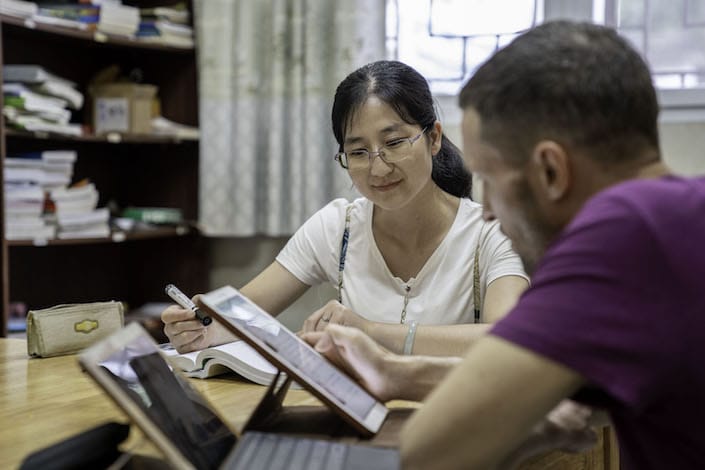
Some students choose to learn both Mandarin and Cantonese.
Ready to learn?
Ultimately, each language has its own benefits and comes with its own special traits, cultural heritage and linguistic beauty. Learning any language has benefits, so there is no need to worry too much about whether you’ve picked the “right” one.
Remember, if you are interested in learning Mandarin, you can enroll in CLI’s one-on-one Online Program and learn Chinese from the comfort of your own home!

The Internet makes it convenient to learn Chinese from anywhere in the world.
Mandarin vs Cantonese: Useful Mandarin vocabulary
| Chinese | Pinyin | English |
|---|---|---|
| 普通话 | Pǔtōnghuà | Mandarin (lit. "common language") |
| 粤语 | Yuèyǔ | Cantonese |
| 广东话 | Guǎngdōnghuà | Cantonese |
| 中文 | Zhōngwén | Chinese language |
| 书面语 | shūmiànyǔ | written language |
| 口语 | kǒuyǔ | spoken language |
| 通用语 | tōngyòngyǔ | lingua franca |
| 声调 | shēngdiào | tones |
| 四声 | sìshēng | four tones |
| 九声六调 | jiǔ shēng liù diào | "9 sounds and 6 tones" |
| 有用 | yǒuyòng | useful |
| 证书 | zhèngshū | certificate |
| 正式 | zhèngshì | formal |
| 地区 | dìqū | region; area |
| 共同点 | gòngtóngdiǎn | common ground |
| 区别 | qūbié | differences |
| 音节 | yīnjié | syllable |





